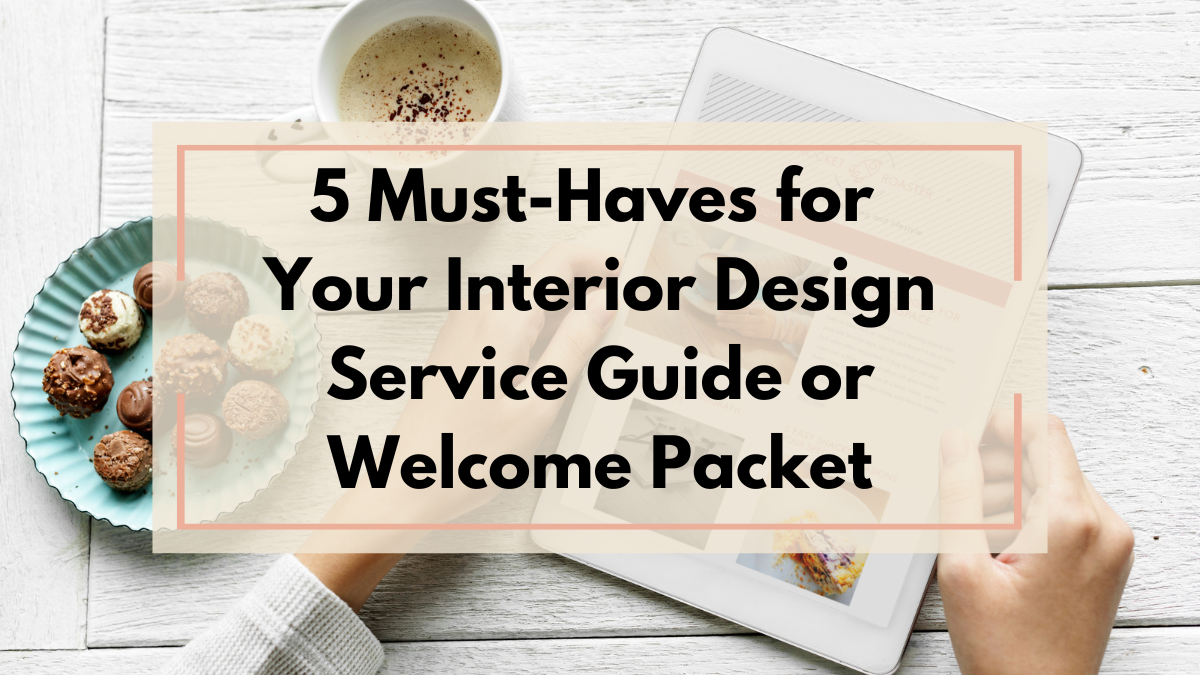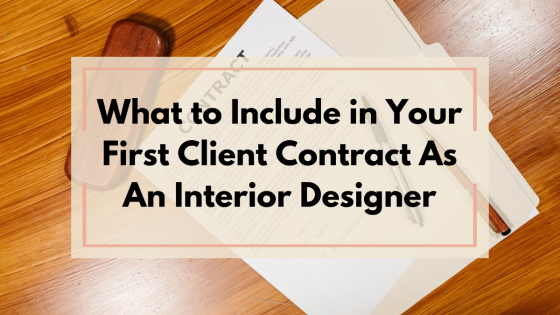5 Must-Haves for Your Interior Design Service Guide or Welcome Packet

As an experienced interior designer with a growing business, you've likely encountered those moments when a client project went sideways because expectations weren't crystal clear from the start. Maybe you found yourself making endless revisions, dealing with scope creep, or struggling with payment delays. These frustrations not only drain your creative energy but can seriously impact your bottom line.
This is where a well-crafted service guide or welcome packet becomes your business's secret weapon. Think of it as your professional handbook - a document that outlines exactly how you work, what clients can expect, and how the entire design process unfolds. When done right, this tool becomes the foundation for smooth client relationships, helping you work more efficiently while maintaining healthy boundaries.
Let's break down the five essential elements every interior designer should include in their service guide or welcome packet to transform their client experience, reduce misunderstandings, and position themselves as the consummate professionals their clients need.
681cf0ae82882_lg.png)
#1. A Clear Process Roadmap
The cornerstone of any effective service guide or welcome packet is a step-by-step breakdown of your design process. Your clients are hiring you not just for your aesthetic vision but for your expertise in navigating complex projects.
Start by outlining each phase of your design process, from initial consultation to final installation. For each phase, explain:
- What happens during this stage
- What you need from the client
- What deliverables they can expect
- Typical timeframes for completion
Consider creating a visual timeline or flowchart that clients can reference throughout the project. This roadmap serves multiple purposes: it educates clients on the value of your methodology, prevents them from skipping crucial steps, and gives them confidence in your structured approach.
Remember, clients who understand your process are less likely to make unreasonable requests or expect immediate results. They'll appreciate seeing the thoughtful framework behind your creative magic.
#2. Comprehensive Fee Structure and Payment Terms
Nothing derails a designer-client relationship faster than confusion about money. Your service guide or welcome packet should eliminate any ambiguity about how and when you charge for your expertise.
Include these key financial elements:
- Your fee structure (hourly, flat fee, percentage-based, or hybrid)
- Payment schedule with clear due dates
- Accepted payment methods
- Late payment policies and fees
- Retainer requirements and what they cover
- How additional services and revisions are billed
Be transparent about potential additional costs clients might encounter, such as contractor markups, procurement fees, or rush charges. This transparency builds trust and prevents sticker shock later in the project.
Consider including a sample invoice or payment schedule so clients understand exactly what to expect. When clients know upfront how your financial relationship works, you'll spend less time chasing payments and more time designing beautiful spaces.
681cf1a35d760_lg.png)
#3. Detailed Communication Guidelines
Effective communication is the lifeblood of successful design projects. Your service guide or welcome packet should establish clear protocols for how and when you'll communicate with clients.
Outline these communication essentials:
- Your regular business hours
- Expected response times for emails, calls, and texts
- Preferred communication channels for different types of requests
- How to handle urgent issues or after-hours emergencies
- Regular meeting cadence and what to expect in each meeting
- Who will be their primary point of contact on your team
Be specific about boundaries, for example, if you don't respond to texts after 6 pm or don't check email on weekends. When clients understand your communication framework, they'll respect your time and you'll avoid the stress of feeling perpetually "on call."Consider creating templates for common client communications and include examples in your guide. This shows clients what effective communication looks like and saves you time crafting the same messages repeatedly.
#4. Defined Revision and Approval Processes
Even the most seasoned designers need a clear framework for managing client feedback and revisions. Without boundaries, you risk endless tweaking that erodes your profit margins and timeline.
Your service guide or welcome packet should specify:
- Number of revisions included in your base fee
- The process for requesting and implementing changes
- How additional revisions are handled and billed
- Required response timeframes for client approvals
- What constitutes a revision versus a new design direction
- How to handle major changes in project scope
Include a clear change order process that documents when a client request goes beyond the original scope. This protects both parties and ensures you're compensated fairly for additional work.
Consider implementing a formal approval process with signature requirements at key project milestones. This prevents backtracking and creates accountability for both you and your client as the project progresses.
#5. Project Completion and Follow-Up Protocol
The final must-have for your service guide or welcome packet is a clear framework for wrapping up projects and transitioning to a long-term client relationship. Detail your process for:
- Final installations and styling
- Project punch lists and addressing outstanding items
- Client walk-throughs and handover documentation
- Warranty information for products and services
- Maintenance recommendations for their new space
- How you handle post-project support
Include information about your referral program or incentives for repeat business to encourage satisfied clients to become advocates for your brand.
Consider adding a client exit interview or feedback form template. This shows you value their input and gives you valuable insights to refine your process for future clients.
681cf27f43e10_lg.png)
Conclusion
A thoughtfully crafted service guide or welcome packet does more than just set expectations. It also elevates your entire business. When clients see your comprehensive, professional documentation, they immediately recognize they're working with an established expert who values clarity and structure.
The most successful interior designers understand that their talent is just one component of their business. Systems and processes that protect your time, energy, and creativity are equally important for sustainable growth.
Ready to create or upgrade your own service guide or welcome packet? Start with these five elements and customize them to reflect your unique business approach and brand voice. Consider investing in professional design help to ensure your guide or packet looks as polished as the spaces you create. Your future self and your profit margins will thank you for establishing these clear foundations for client relationships.
Remember, your service guide or welcome packet is a living document that should evolve as your business grows. Revisit it regularly to ensure it continues to serve your needs and reflects your current service offerings and processes.
Ready to transform your project management approach? Check out RDash to see how their designer-focused platform can streamline your operations. Use exclusive discount code “INDesignDeskfeb25” to get 20% off your subscription plan! If you’re serious about optimizing your workflow, sign up for a free demo session right here.
Thank you for reading ❤️
Categories: : Client Experience
 Rikaza Shakeer
Rikaza Shakeer 


